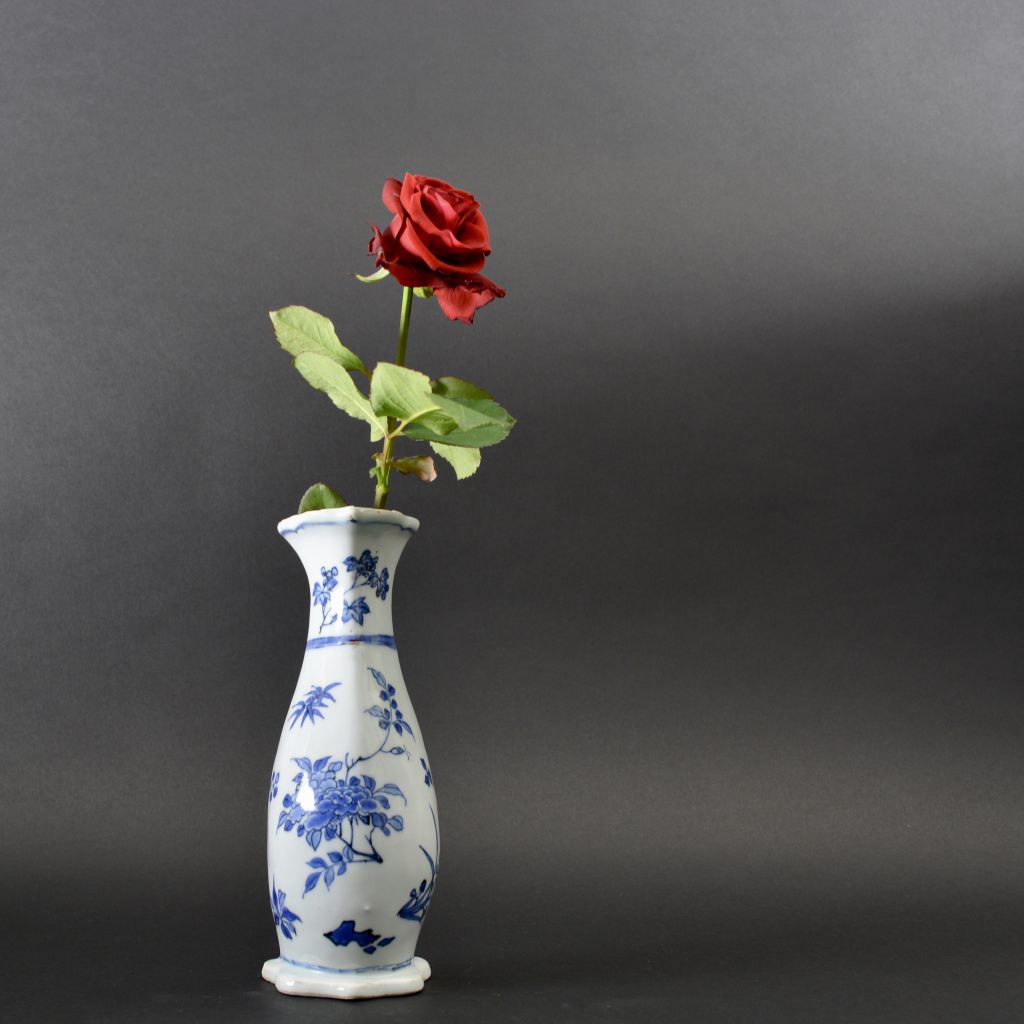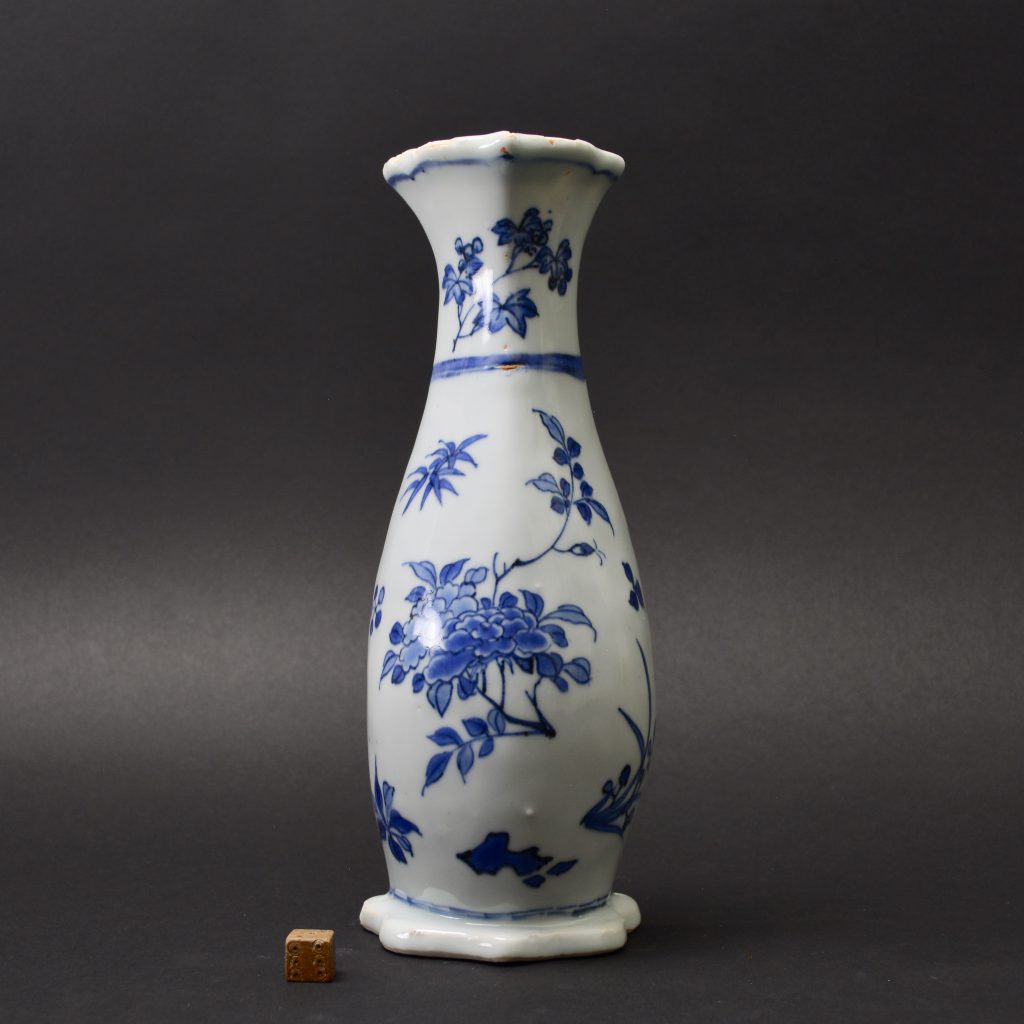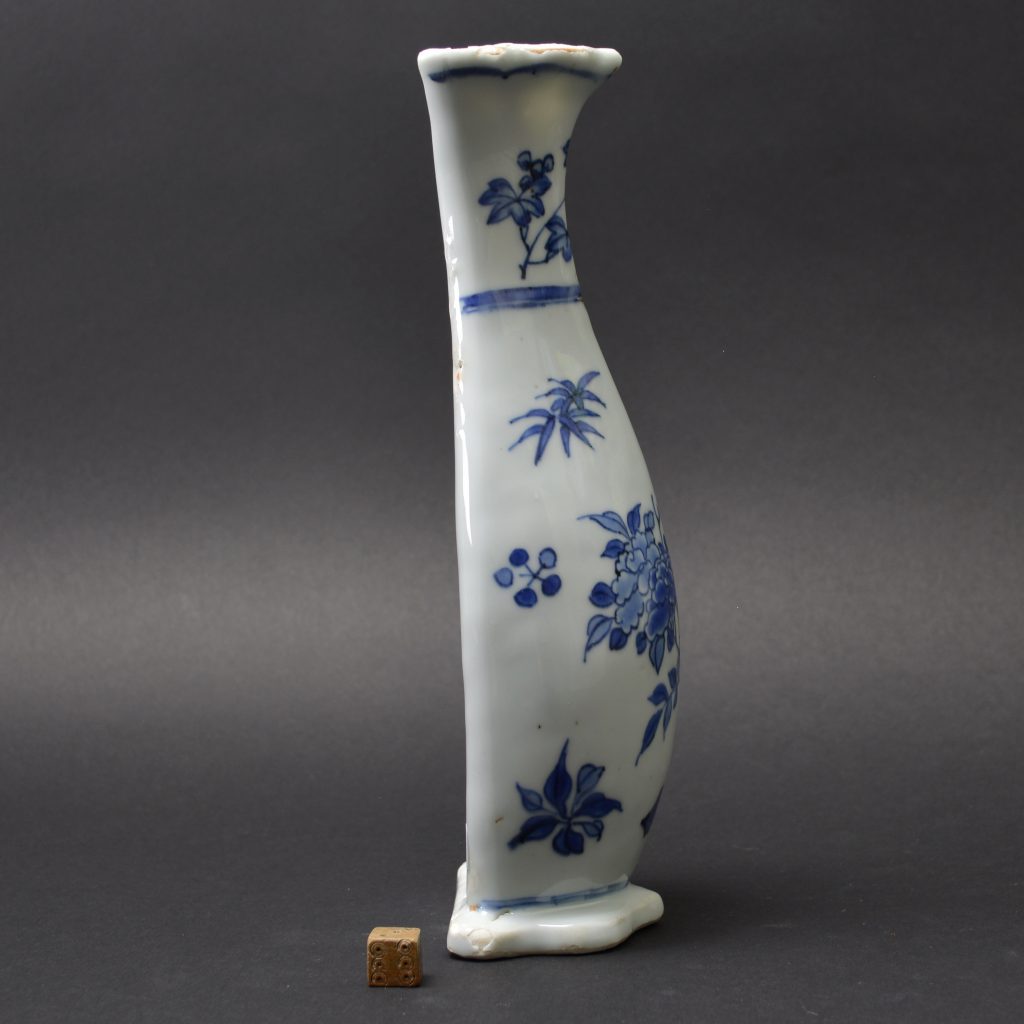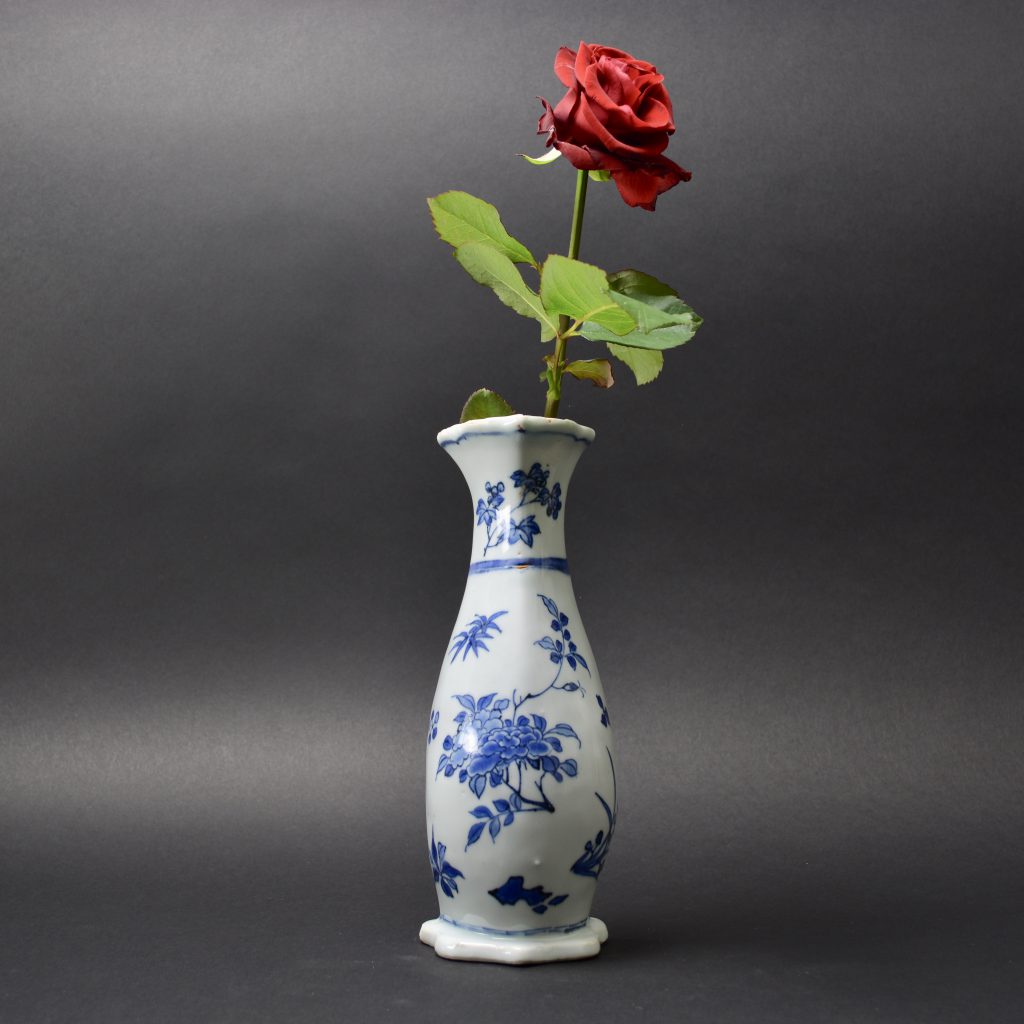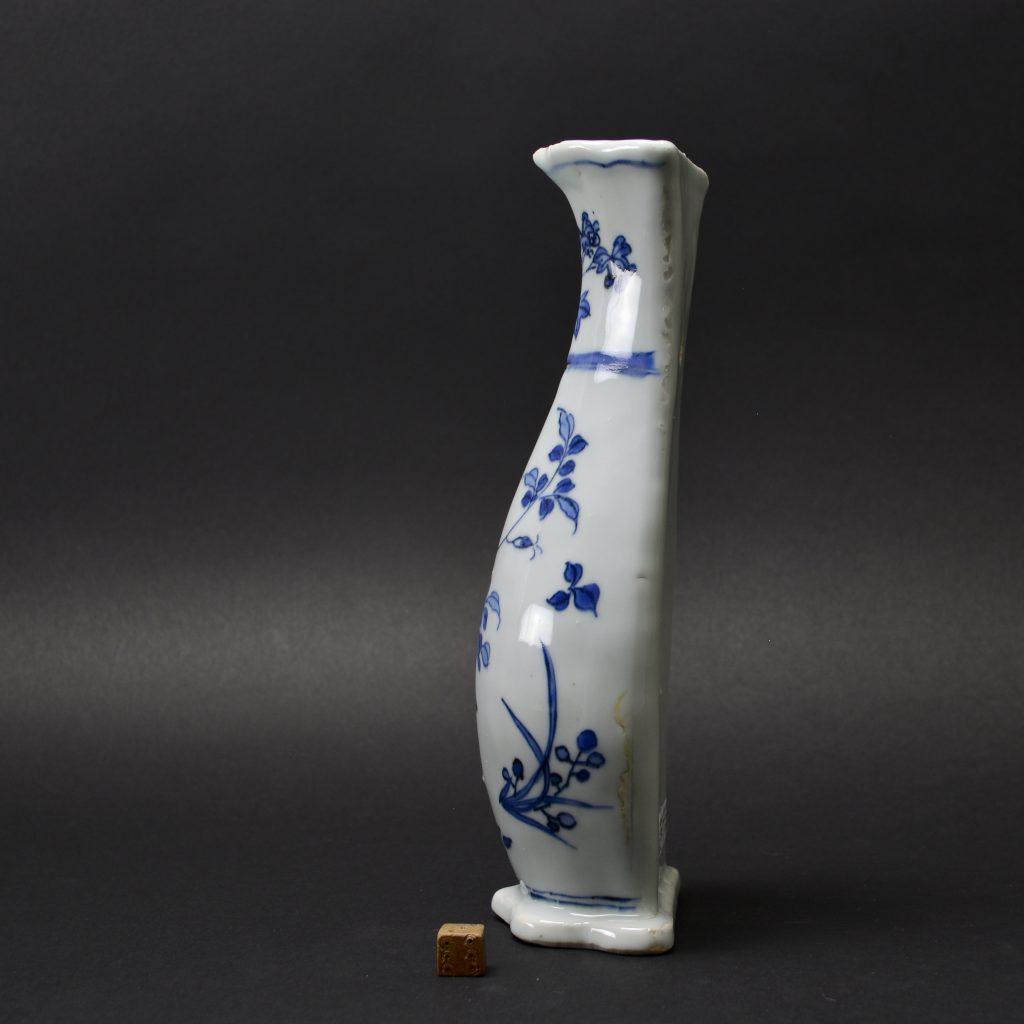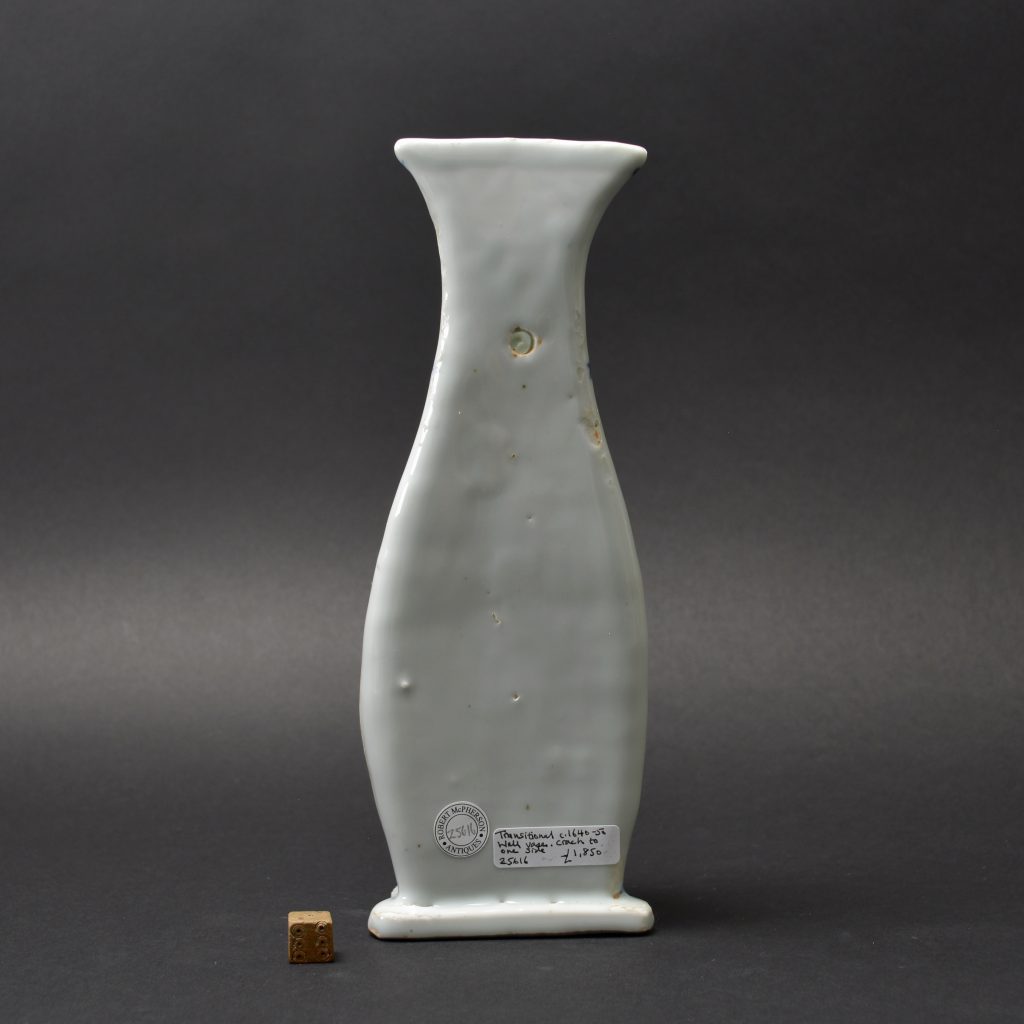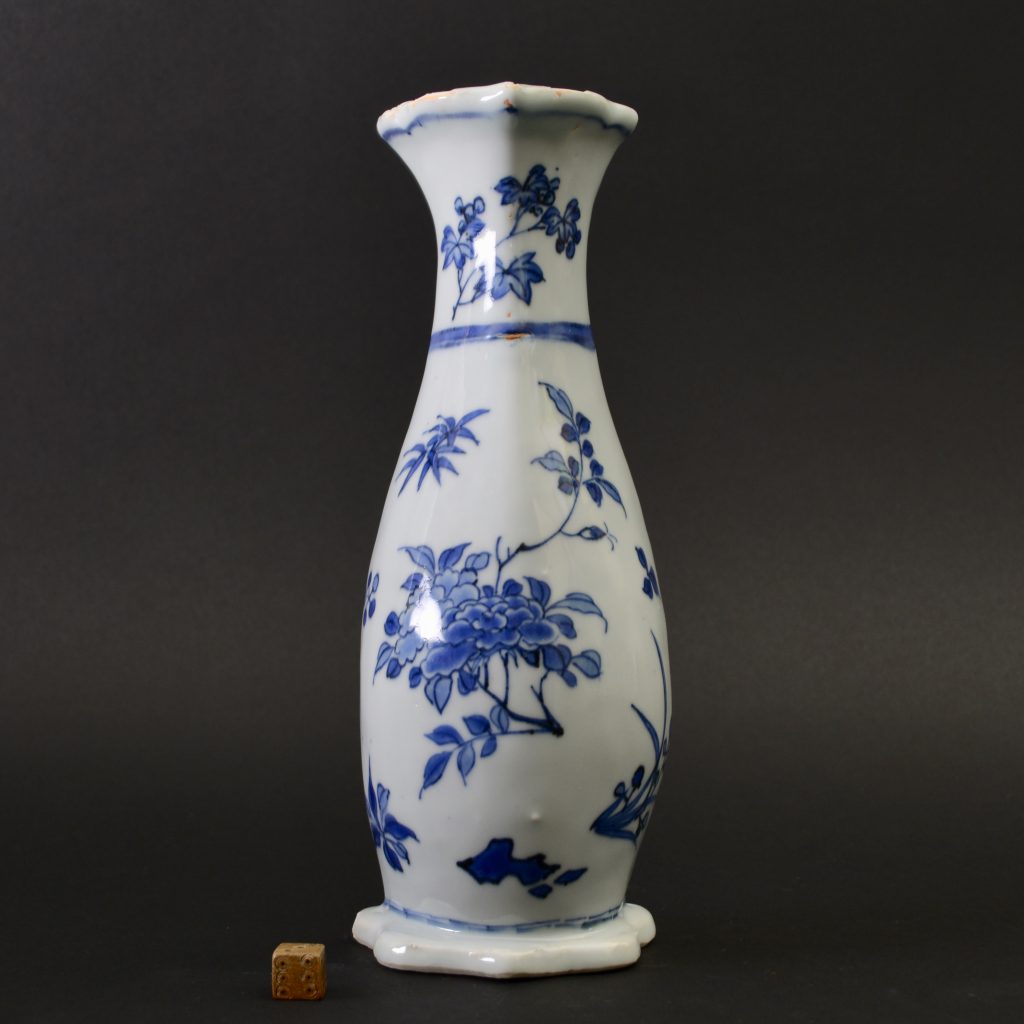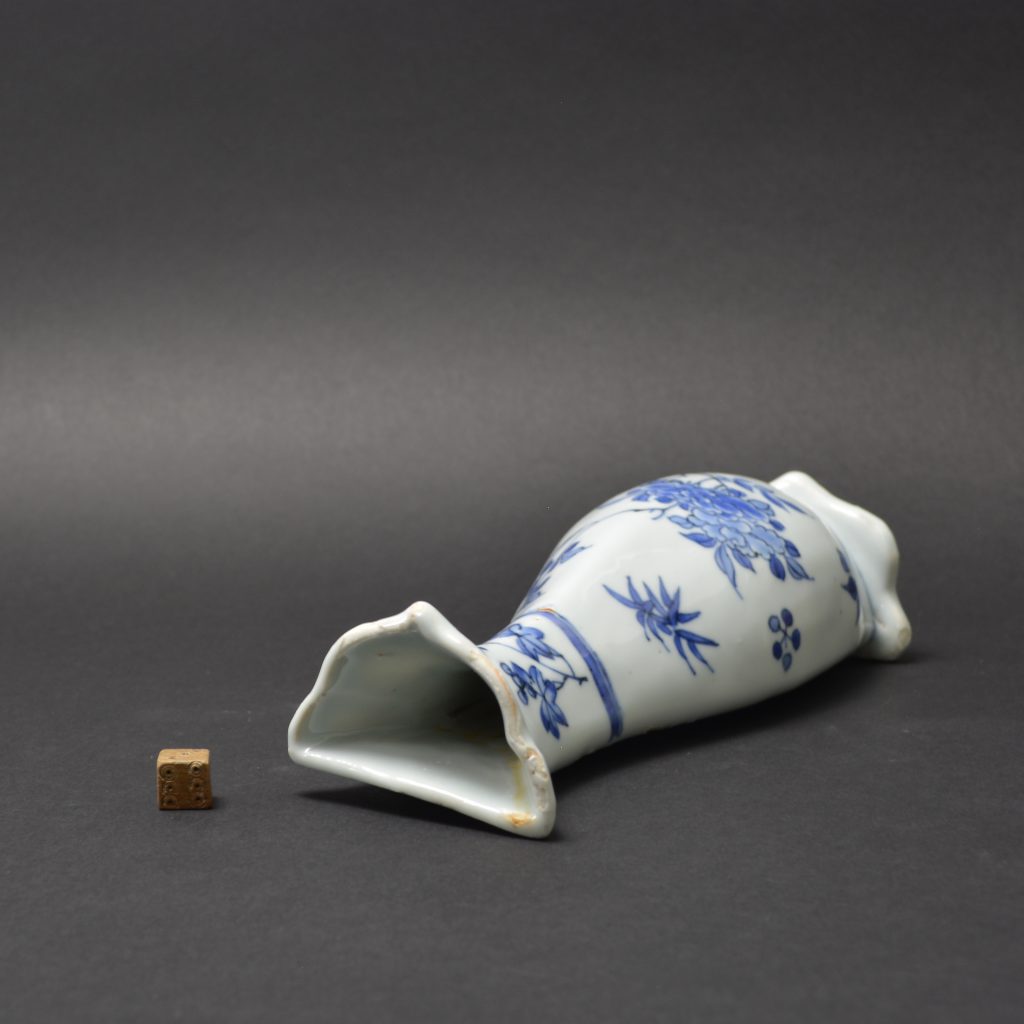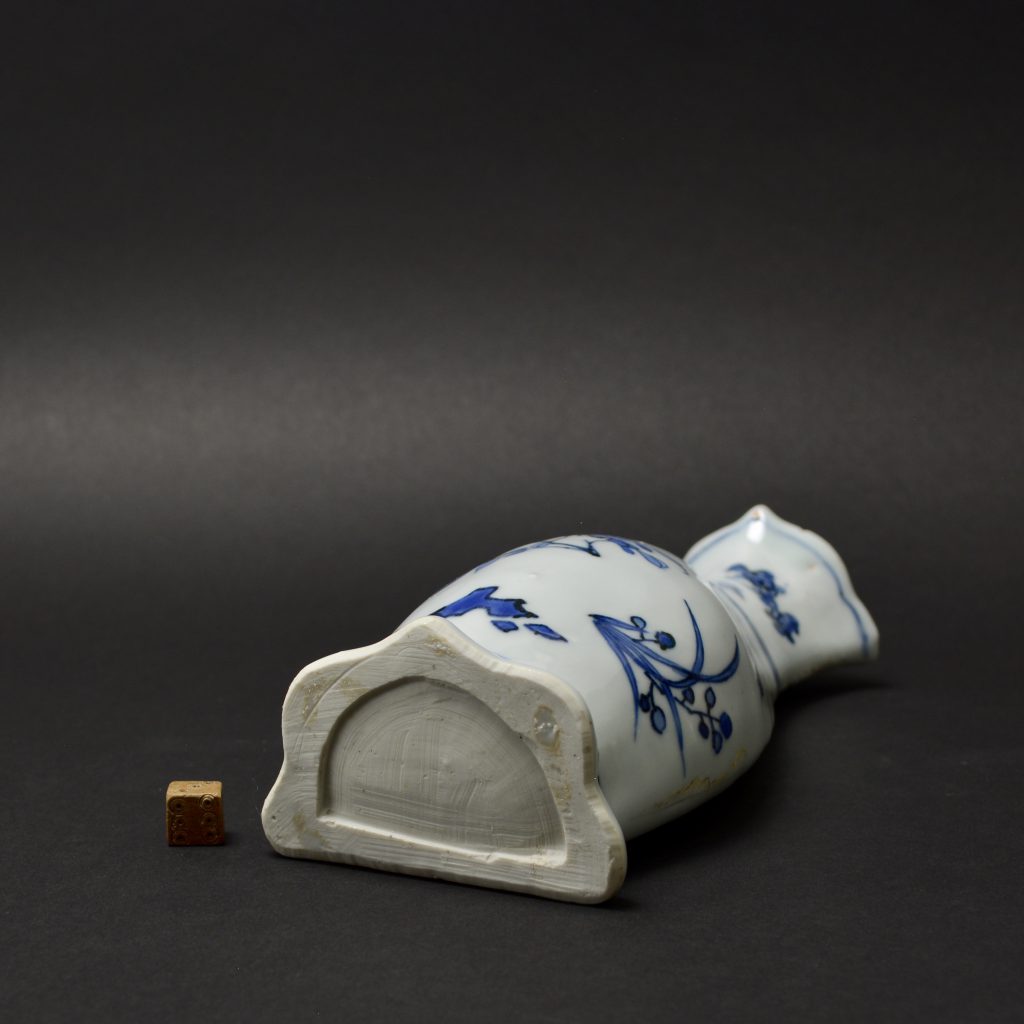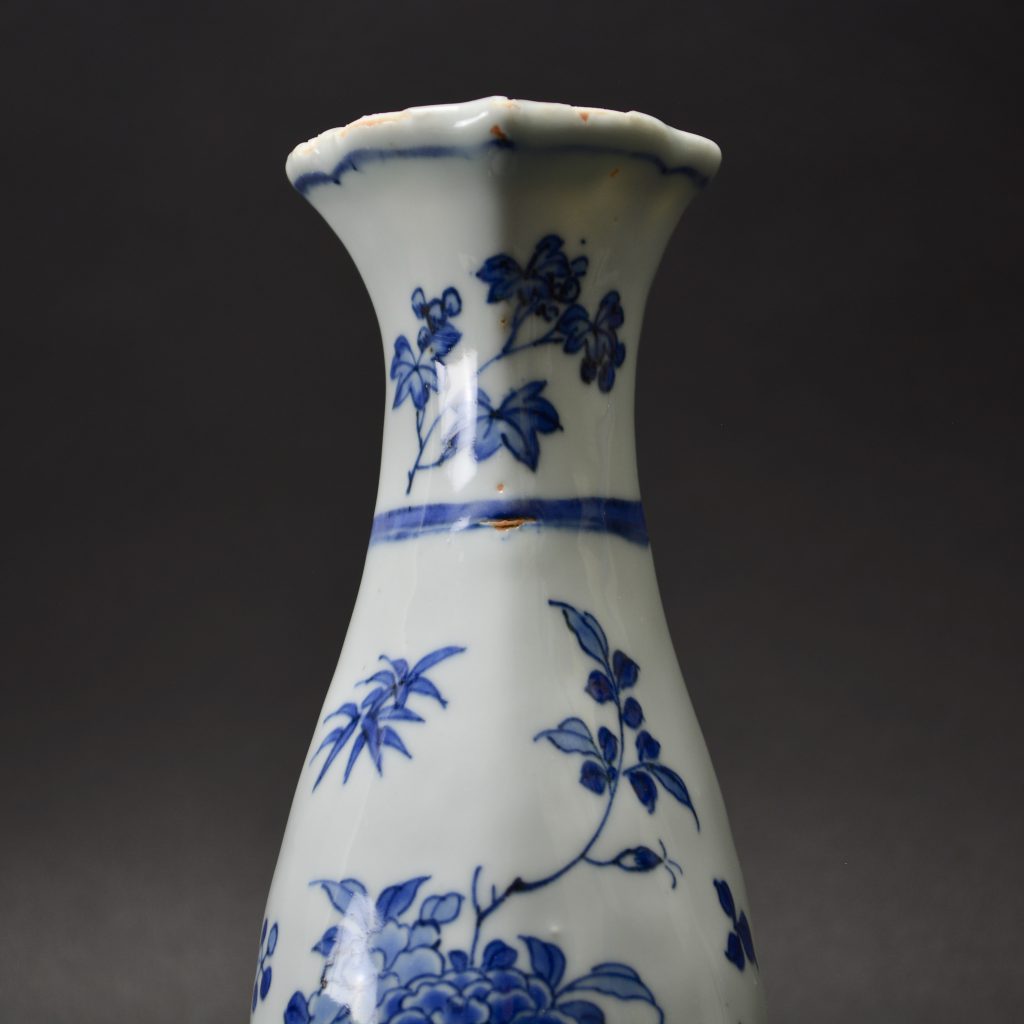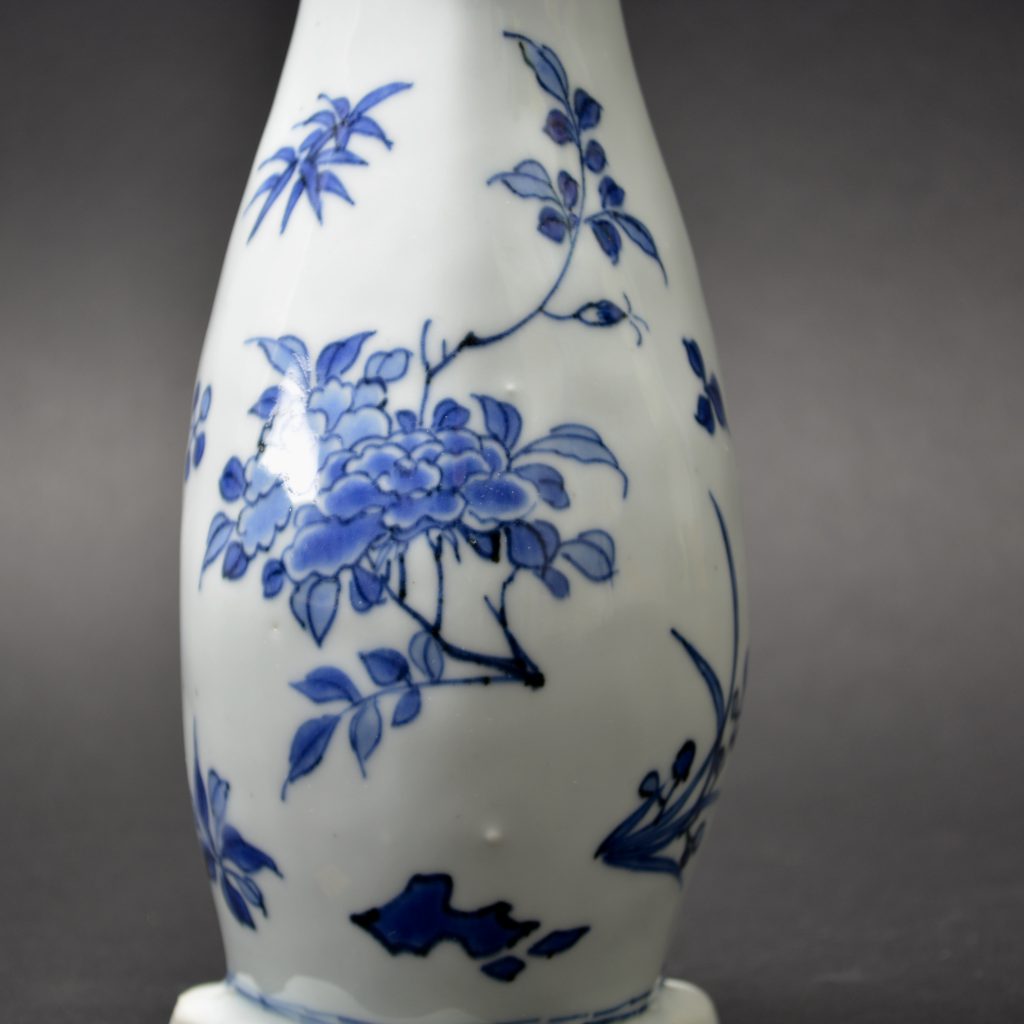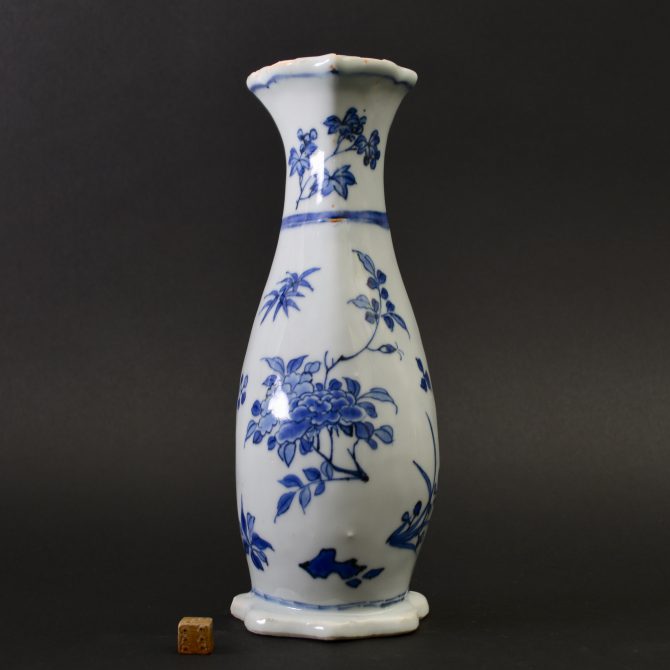
A Transitional Blue and White Porcelain Wall Vase, Chongzhen or Shunzhi
A Transitional Blue and White Wall Vase. Late Ming, Chongzhen Period 1627 – 1644 or early Qing, Shunzhi 1644 – 1661. This rather large Transitional Porcelain wall vase is decorated with a central flowering peony branch, a flowering orchid as well as bamboo and a collection of small rocks. The shaped foot reflects the barbed flaring rim at the top. The recessed base is left in the biscuit and shows clear evidence of scraping tools. The flat glazed back has an hole cut prior to glazing to affix the vase to the wall.
SOLD
- Condition
- There is a crack to one side which might be caused by a firing fault that runs parallel to it. The top rim is deeply fritted with iron-oxide staining. This shows that it was fritted during manufacturing.
- Size
- Height 24.2cm (9 1/2 inches).
- Provenance
- N/A
- Stock number
- 25616
Information
A Related Transitional Blue and White Vase.
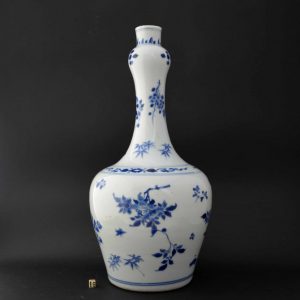
A Transitional Blue and White porcelain vase, late Ming or early Qing, Chongzhen or Shunzhi period c.1640-1650.
A Related Transitional Blue and White Wall Vase.
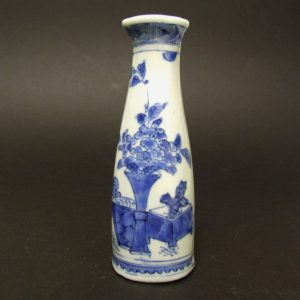
A Transitional Blue and White Wall Vase, Late Ming, Chongzhen Period c.1640. Decorated with a Vase of Flowers to the Center Flanked by a Fish-Bowl to the Left and a Jardinière with a Rock to the Right. In Keeping with Other High-Transitional Porcelain there is `V` Shaped Grass. The Flat Back Pieced for Suspension, Below that a Roughly Drawn Apocryphal Chenghua Mark (Ming Dynasty 1465-1487).
SOLD - Robert McPherson Antiques 22351.
Peony :
Peonies are the most commonly encountered flower on Chinese porcelain, indeed in Chinese art in general. There are two cultivated types of peony commonly depicted, the tree peony Paeonia Suffruicosa (Mudan) and the herbaceous peony P.Lactiflora (Shaoyao). Both have rich exuberant flowers with thin silk like petals but the plants are rather different to each other. The tree peony is not in fact a tree but a deciduous shrub, sometimes rather large and sprawling, it has irregular woody stems. It shares a similar leaf and flower form to the herbaceous peony but they are not close in other ways. The Chinese refer to the peony as the `King of flowers` and are seen as equivalent to the first rank among officials. The flowers are closely associated with royalty because they have been grown in imperial gardens since the Sui dynasty (581-618). The peony is one of the flowers of the four seasons and represents the Spring. It symbolizes wealth and honour, honour in the sense of high rank, having an official position, or high social status.
